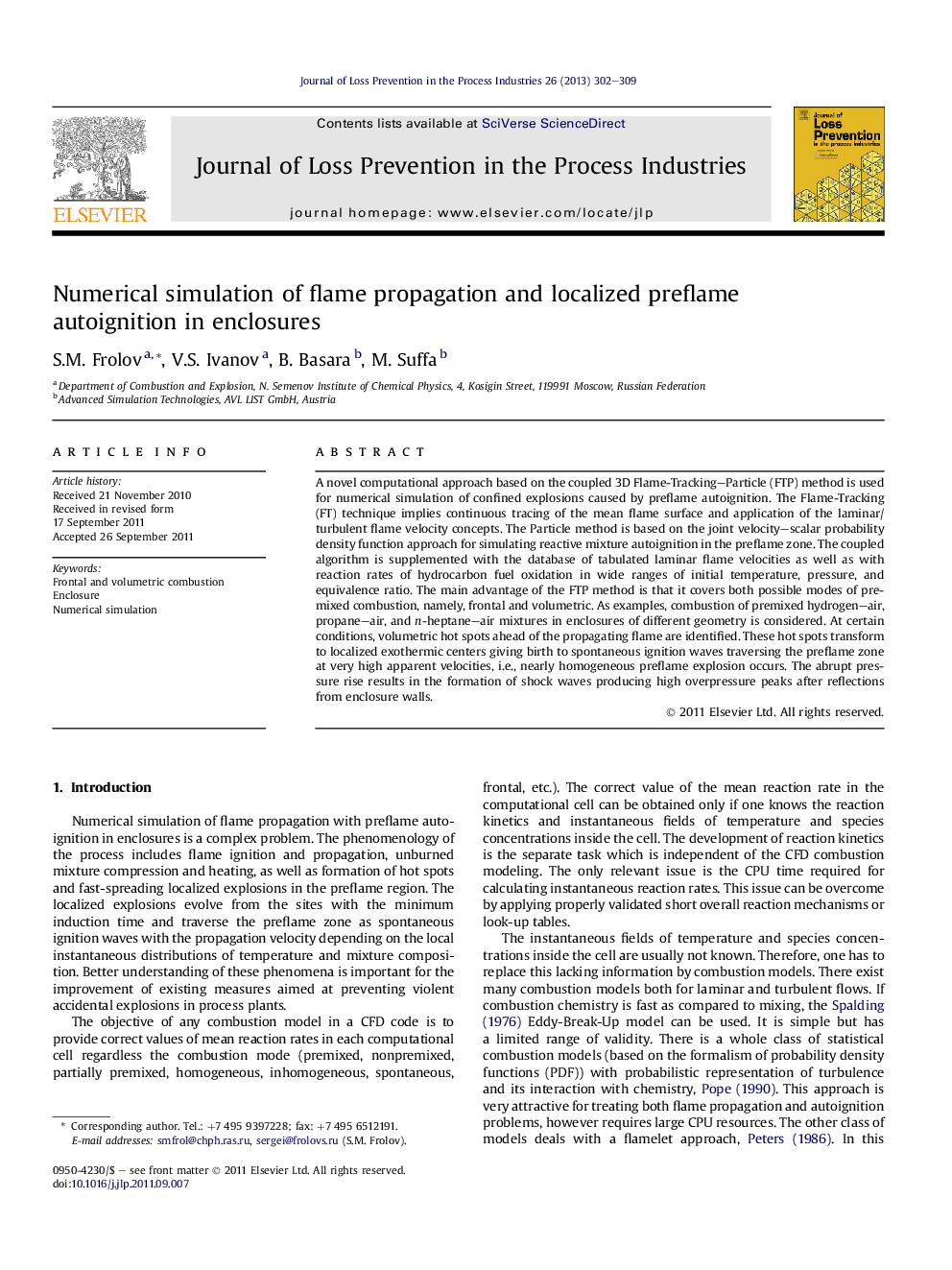| Article ID | Journal | Published Year | Pages | File Type |
|---|---|---|---|---|
| 586897 | Journal of Loss Prevention in the Process Industries | 2013 | 8 Pages |
A novel computational approach based on the coupled 3D Flame-Tracking–Particle (FTP) method is used for numerical simulation of confined explosions caused by preflame autoignition. The Flame-Tracking (FT) technique implies continuous tracing of the mean flame surface and application of the laminar/turbulent flame velocity concepts. The Particle method is based on the joint velocity–scalar probability density function approach for simulating reactive mixture autoignition in the preflame zone. The coupled algorithm is supplemented with the database of tabulated laminar flame velocities as well as with reaction rates of hydrocarbon fuel oxidation in wide ranges of initial temperature, pressure, and equivalence ratio. The main advantage of the FTP method is that it covers both possible modes of premixed combustion, namely, frontal and volumetric. As examples, combustion of premixed hydrogen–air, propane–air, and n-heptane–air mixtures in enclosures of different geometry is considered. At certain conditions, volumetric hot spots ahead of the propagating flame are identified. These hot spots transform to localized exothermic centers giving birth to spontaneous ignition waves traversing the preflame zone at very high apparent velocities, i.e., nearly homogeneous preflame explosion occurs. The abrupt pressure rise results in the formation of shock waves producing high overpressure peaks after reflections from enclosure walls.
► Novel approach for numerical simulation of confined explosions is developed. ► It is applied to model turbulent premixed combustion in vessels of different geometry. ► It allows continuous monitoring of both flame front and preflame reactions.
